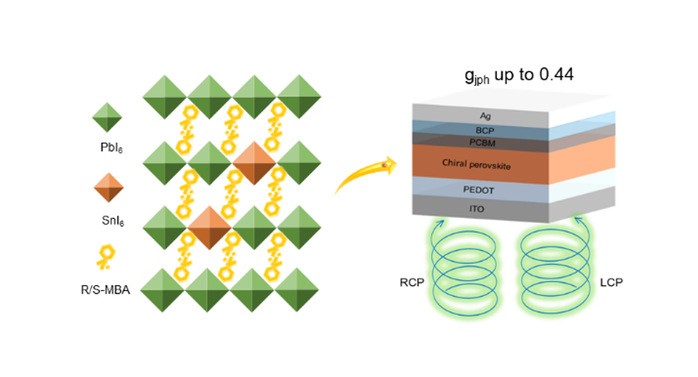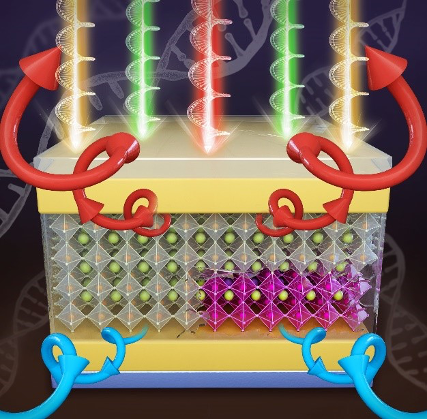The rosy clouds of dawn, the sunset glow, the hazy moonlight and the rainbow are all forms of light found in nature.From an optical point of view, natural light, which does not directly show polarization, is isotropic. When natural light passes through a linear polarizer, it becomes linearly polarized. Through a quarter-wave plate, the linearly polarized light then becomes circularly polarized. Circularly polarized light (CPL) has chiral properties and can be divided into left-handed and right-handed circularly polarized light (LCP and RCP), similar to a human’s left hand and right hand. CPL has potential applications in 3D display and imaging, information storage, spintronics, optoelectronic devices and more. However, CPL detectors usually require the combination of optical elements and detectors, which leads to a highly complex device composition and limits performance of devices. On the other hand, efficient direct CPL detectors can effectively simplify the device structure, but their development is difficult and continues to face challenges.
In recent years, low dimensional organo-inorganic hybrid halogen perovskite has attracted wide attention in the field of CPL detection. By combining the chiral properties of organic molecules with the excellent carrier transport characteristics of inorganic crystal structure, hybrid perovskite shows excellent CPL absorption properties and high photoelectric response. Although the performance of direct CPL detectors based on hybrid perovskite is improving, it is still difficult to significantly increase the asymmetry factor and expand the response range of CPL in the visible region.
Recently, Associate Professor Ning Zhijun’s group in SPST made important progress in the field of chiral perovskite-based direct circularly polarized light detection. The team improved the asymmetry of chiral perovskite and the chiral induced spin current of perovskite thin films by doping B-site tin ions on the basis of 2D lead perovskite. The research results were published online in Nano Letters in an article entitled “Symmetry-Broken 2D Lead–Tin Mixed Chiral Perovskite for High Asymmetry Factor Circularly Polarized Light Detection”.
Symmetry broken induced spin splitting plays a key role in selective CPL absorption and spin carrier transport. In this study, the band structure of 2D tin-lead mixed chiral perovskite was calculated and simulated by first principles. It was found that the mixing of tin can break the symmetry of perovskite, induce pure spin splitting, and improve the spin current selectivity of thin films. The perovskite thin film with tin-lead mixed structure was prepared by solution method. After the addition of tin, the absorption band of perovskite could be extended to the whole visible region, and the thin film showed high CD values. The chiral photodetector prepared by the tin-lead mixed perovskite structure showed a high-level ability to distinguish LCP and RCP light, and the anisotropy factor of photocurrent reached a record high of 0.44, 144% higher than that of pure two-dimensional lead perovskite film, and it is the highest value reported for the pure chiral 2D perovskite. In addition, due to the diode structure of the detector, the device showed a faster microsecond response speed.


This study has deepened the understanding of the chiral properties of chiral perovskites and provided a new idea for the development of direct circularly polarized photodetectors with higher efficiency based on hybrid perovskite structures, and it is expected to be applied in novel CPL detection and imaging.
Fourth year undergraduate student Yang Yunqing, master graduate of the Class of 2022, Yao Bing, and Ph.D. graduate of the Class of 2022, Wei Qi, are the co-first authors of this article. Prof. Ning Zhijun is the corresponding author. ShanghaiTech University is the first affiliation.
**The article was provided by Prof. Ning Zhijun.

